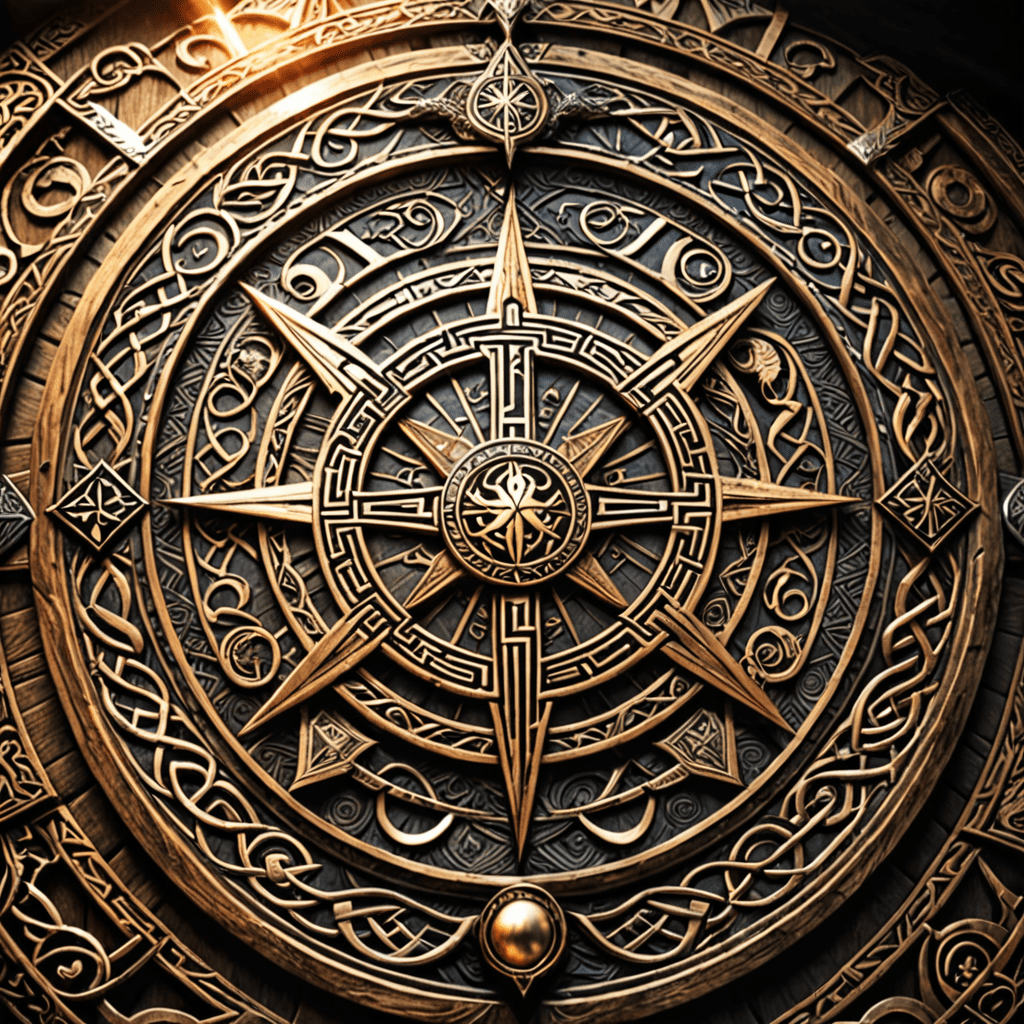The Role of Symbols and Sigils in Norse Mythology
In Norse mythology, symbols and sigils play a significant role in conveying powerful meanings, representing deities, stories, protection, and connection to the ancient Norse belief system. Understanding these symbols provides insights into the rich tapestry of Norse mythology and its cultural significance.
1. Importance of Symbols in Norse Mythology
Symbols in Norse mythology serve as visual representations of various gods, goddesses, mythical creatures, and cosmic elements. These symbols are imbued with layers of meanings and often have complex associations with different aspects of the Norse universe. For example, Mjölnir, the hammer of Thor, symbolizes strength, protection, and the thunderous power of nature. The Valknut symbol, associated with Odin, represents the interconnectedness of life, death, and destiny.
2. Significance of Sigils in Norse Culture
Sigils, unique symbols created through magical or divine means, hold a special place in Norse culture. These sigils were believed to possess mystical powers and were used for protection, guidance, and spiritual communication. For example, the Aegishjalmur (Helm of Awe) is a powerful sigil known for safeguarding its bearer from harm and instilling courage in the face of adversity.
3. Connection to Norse Mythological Stories
Many symbols and sigils in Norse mythology are intricately linked to legendary tales and folklore. For instance, the mythical tree Yggdrasil, representing the cosmic structure of the universe, is often depicted with interconnected branches and roots, embodying the connection between different realms. The Vegvisir, a runic compass, is said to lead the bearer through storms and difficult paths, mirroring the journey of exploration and discovery in Norse myths.
4. Modern Interpretations and Applications
Today, symbols and sigils from Norse mythology continue to intrigue and inspire people around the world. They are often incorporated into tattoos, jewelry, art, and even spiritual practices for their aesthetic appeal and deeper meanings. While some view them as cultural symbols, others attribute mystical or protective qualities to these sigils, carrying on ancient beliefs into contemporary contexts.
FAQs about The Role of Symbols and Sigils in Norse Mythology
What are symbols and sigils in Norse mythology?
Symbols and sigils in Norse mythology are powerful images or designs representing various concepts, deities, or forces in the Norse belief system. These symbols hold deep meanings and are often imbued with magical or protective properties.
What is the significance of symbols and sigils in Norse mythology?
Symbols and sigils play a crucial role in Norse mythology as they convey important cultural, spiritual, and mystical meanings. They are believed to provide protection, strength, guidance, and connection to the divine world of the Norse pantheon.
Can you provide examples of prominent Norse symbols and sigils?
Certainly! Examples of famous Norse symbols and sigils include Mjölnir (Thor’s hammer), Valknut (the interlocking triangles associated with Odin), Vegvisir (the Viking compass), and Aegishjalmur (the Helm of Awe). Each symbol carries a unique significance and purpose.
How were symbols and sigils used in Norse mythology?
Symbols and sigils were used for various purposes in Norse mythology, such as protection in battle, invoking the gods’ favor, warding off evil spirits, and guiding travelers safely. They were often engraved on weapons, amulets, jewelry, and even carved into runestones as




